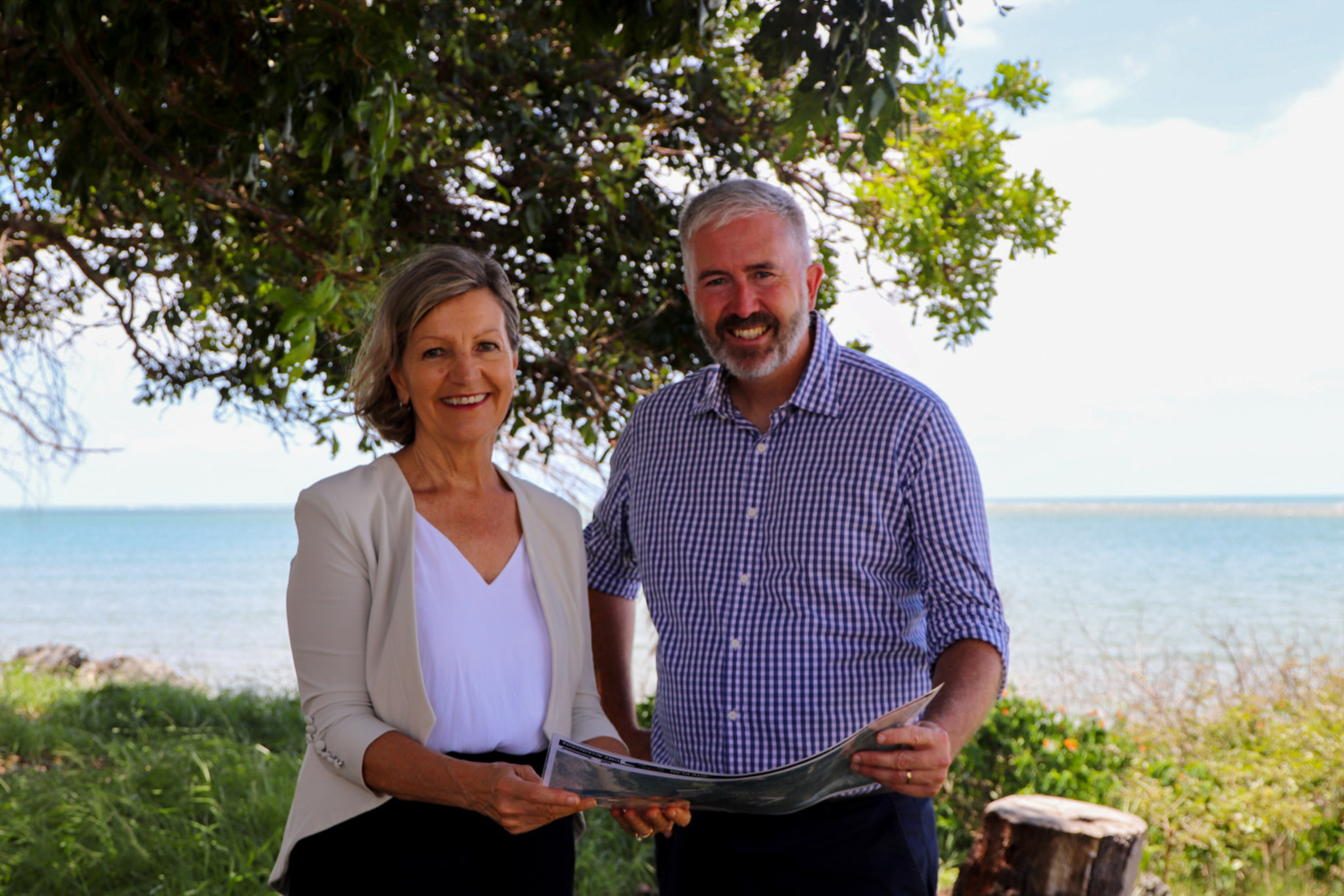Marine research in the Fraser Coast has received a major funding boost from the Federal Government, as UniSC scientists examine a potential link between the habitat health and a mystery shell-wasting disease in endangered sea turtles.
The Australian Government today announced the final allocation of funding under the Hinkler Regional Deal of $250,000 for the planned Fraser Coast Turtle Rehabilitation and Research Centre, led by the University of the Sunshine Coast.
UniSC Vice-Chancellor and President, Professor Helen Bartlett, said the funding was a vital next step in supporting UniSC and its partners – Turtles in Trouble Rescue and the Butchualla Native Title Aboriginal Corporation – transform a disused scout hall into specialist rehabilitation and research centre for sick, starving and dying sea turtles.
Last year the Queensland Government allocated $1 million towards the centre, on top of an earlier commitment of $230,000 to purchase specialist turtle life support equipment for the region.
“Today’s announcement highlights how all levels of government – federal, state and local – recognise and support the need for timely action to improve the plight of our marine turtles, with an unprecedented number of strandings and deaths over the past two years,” Professor Bartlett said.
“Unfortunately, there were more than 230 recorded turtles deaths last year – reinforcing why local turtle rehabilitation and research efforts are a priority for UniSC."
The centre – with its specialist turtle life support system that will include indoor tanks for sea turtle care and recovery – will mean many sick and injured turtles will no longer have to be transported hours away for treatment to ensure their best chance of survival.
“Importantly, the centre will help UniSC continue our vital research on the general health and threats facing marine life," Professor Bartlett said.
Federal Minister for Regional Development and Local Government, Kristy McBain said regional areas were home to some of Australia’s most diverse and breathtaking natural environments.
“Which is why it’s important that all levels of government and the community work together to preserve this,” she said.
“That’s exactly what we’re doing through the Hinkler Regional Deal, with our $250,000 investment to strengthen the innovative work of the Fraser Coast Turtle Rehabilitation and Research Centre and to improve the health of local turtle populations.
“By investing in local-led projects like this, we’re supporting long-term employment opportunities and economic growth in the Fraser Coast region.”
Assistant Minister for Regional Development, Senator Anthony Chisholm, who announced the funding in Hervey Bay, said the centre would put the region at the forefront when it came to developing long-term solutions to the health issues facing sea turtles.
“This facility will also boost the local economy with an estimated 15 jobs set to be supported by the centre, drawing in students, researchers and tourists,” he said.
"“Through projects like this one, our government is committed to honouring the commitments made under the Hinkler Regional Deal, which will benefit the wider Fraser Coast region for many years to come," Senator Chisholm said.
The centre is expected to be completed by the end of the year, and operational early in 2025.
Meanwhile, University of the Sunshine Coast researchers are continuing efforts to find the cause of a new syndrome that is making the shells of turtles soft and sponge-like and, in some instances exposing bare bone, among turtles in the Great Sandy Strait.
Associate Professor Kathy Townsend said a new study was concentrating on the direct connection between sea turtle health and habitat health in the Great Sandy Marine Park.
Many turtles are starving, with only one percent of seagrass beds – the main food source for turtles and dugongs – remaining in some areas after being smothered by sediment from heavy rain and flooding from extreme weather events over the previous three years.
“We want to see if there is anything unusual in their habitat that could be related to the wasting, including impacts on their diets,” Dr Townsend said.
Media enquiries: Please contact the Media Team media@usc.edu.au



